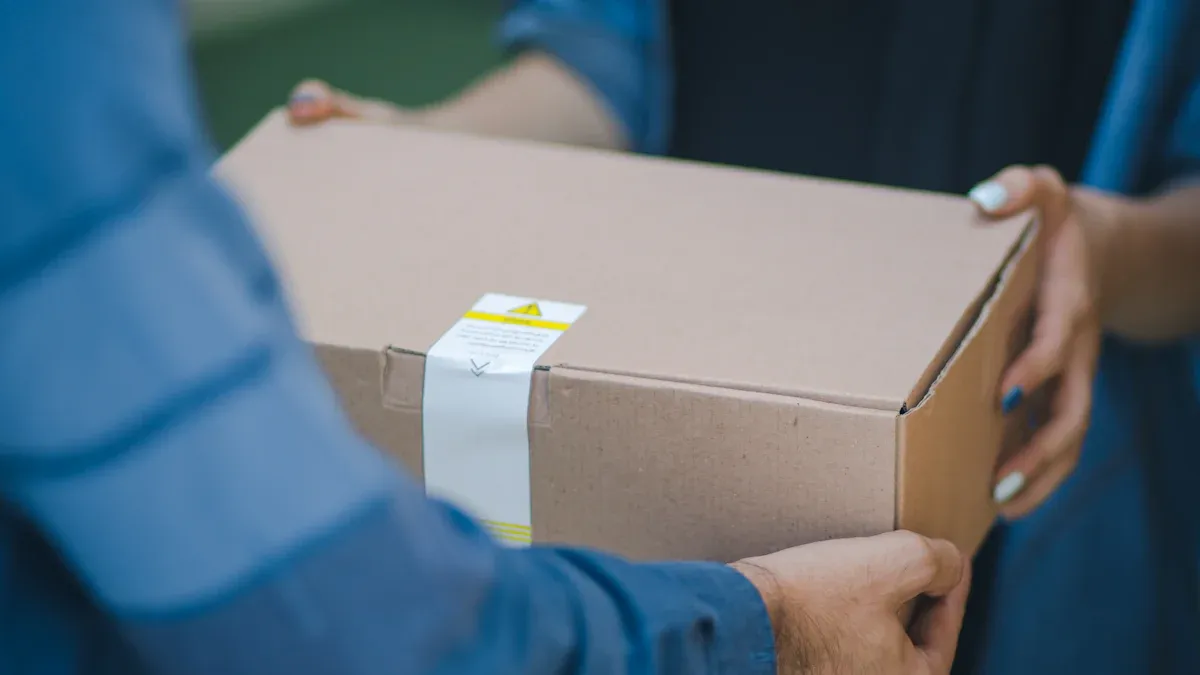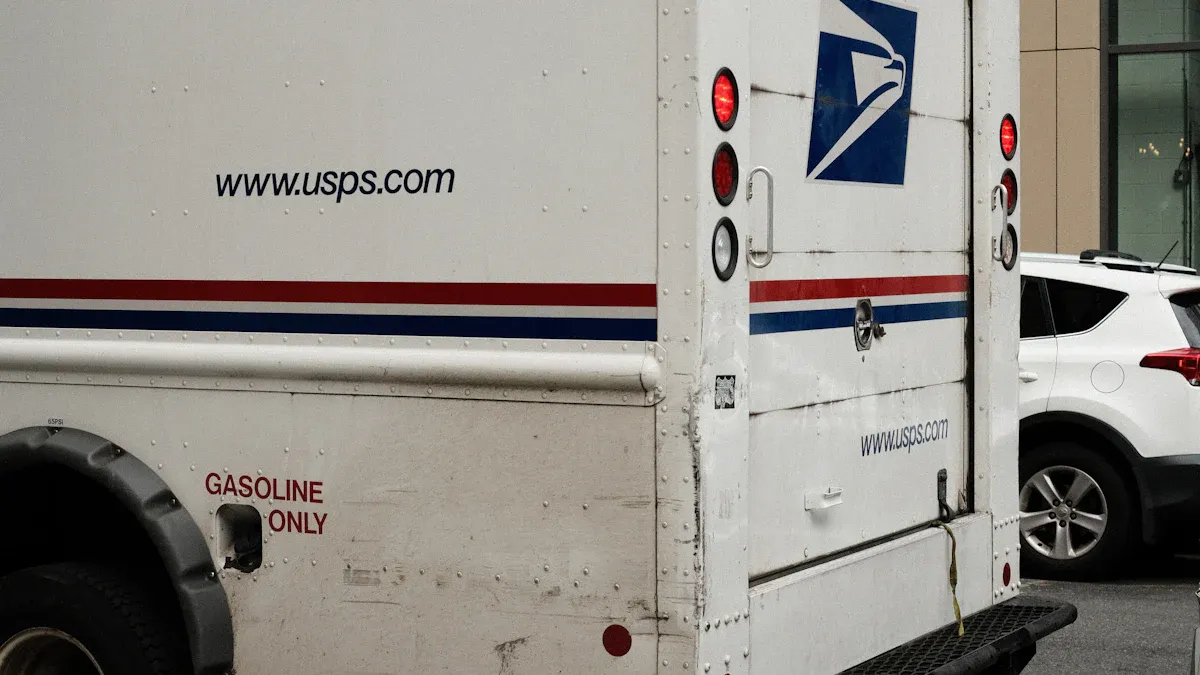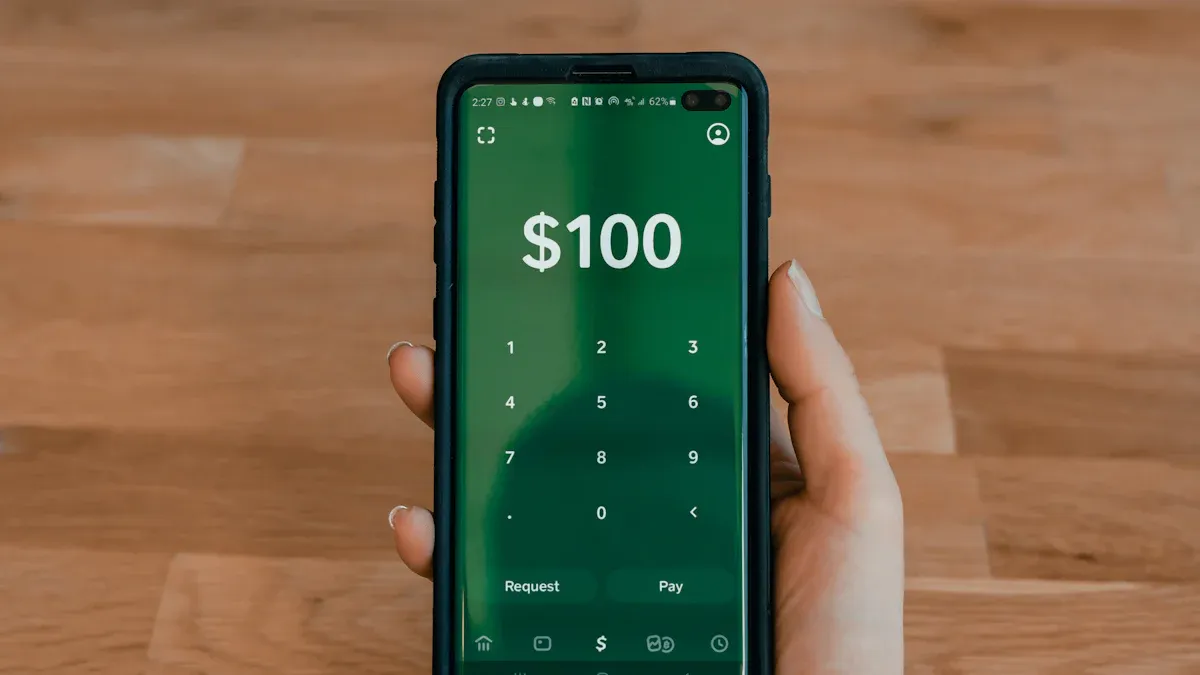- EasyCard
- Trade
- Help
- Announcement
- Academy
- SWIFT Code
- Iban Number
- Referral
- Customer Service
- Blog
- Creator
Can You Remit Money by Mail? An Analysis of Safe and Convenient Remittance Methods

Image Source: unsplash
Can you mail money for remittance? The answer is yes, but it’s a high-risk and outdated method. Mailing cash or checks is legal but far less secure, fast, or convenient compared to modern electronic methods.
According to the U.S. Financial Crimes Enforcement Network (FinCEN), check fraud related to mail theft alone accounts for over $688 million.
Today, more than 53% of global consumers prefer using digital apps for financial transactions. Choosing the right remittance method is crucial.
Key Takeaways
- Mailing money is risky, unsafe, inefficient, and involves a complex process.
- Modern electronic remittance methods are safer, faster, and more convenient.
- Wire transfers are ideal for large, urgent transfers, while ACH transfers suit routine payments.
- Online platforms like Wise offer low-cost, transparent international remittance services.
- When choosing a remittance method, consider the amount, speed, and whether the recipient has a bank account.
Inherent Risks of Mailing Money

Image Source: unsplash
Although mailing seems like a traditional remittance method, you must understand the significant risks it entails. These risks involve not only financial security but also time and effort costs.
Security Risks
When mailing cash or checks, you face the direct risk of the mail being lost, damaged, or stolen. If an issue occurs, your losses may be difficult to recover.
Important Reminder: The United States Postal Service (USPS) explicitly states that they offer no compensation for uninsured items mailed via standard mail.
- Cash Risk: If you mail cash, USPS compensation for loss is capped at $15.00 unless you use the costly Registered Mail service.
- Check Risk: A lost check can be voided, but the process is cumbersome. You need to contact your bank immediately to request a stop payment, which typically costs $20 to $35. Afterward, you must issue and mail a new check, which is time-consuming and labor-intensive.
Efficiency and Tracking Issues
Compared to the immediacy of electronic transfers, mailing money is very slow. Your funds are locked in transit and cannot be used immediately.
| Mail Category | Estimated Delivery Time (Domestic US) | Estimated Delivery Time (International) |
|---|---|---|
| First-Class Mail | 3 – 5 days | 7 – 21 business days |
| Priority Mail Express | Next day – 2 days | 3 – 5 business days |
Additionally, standard mail offers no tracking capabilities. You cannot know the exact location of your mail or confirm whether the recipient received it. To obtain tracking and proof of delivery, you must pay extra for services like Registered Mail or Certified Mail, which further increases costs and complexity.
Process Complexity
The process of mailing a check or money order is far more complicated than you might imagine. You cannot complete it easily on your phone; instead, it involves a series of offline steps:
- Visit a bank, post office, or retail store to purchase a money order or cashier’s check.
- Pay additional handling fees, with money order fees around $1 to $5 and cashier’s checks potentially costing $10 to $15.
- Carefully fill out all details, including the recipient’s name, address, and your signature.
- Keep the receipt safe for future tracking or replacement requests.
- Finally, place the check or money order in an envelope, affix postage, and mail it.
These tedious steps are not only time-consuming but also increase the likelihood of errors.
Detailed Explanation of Modern Safe Remittance Methods

Image Source: unsplash
Say goodbye to the risks and inconvenience of mailing; modern fintech offers a variety of safe and efficient electronic remittance options. Understanding the features of these tools can help you find the most suitable method for your needs.
Wire Transfer
When you need to transfer large sums quickly and securely, wire transfers are the top choice. This is a direct electronic transfer service between banks, known for its high security and reliability.
- Speed: Wire transfers are very fast. Depending on the bank’s processing time, domestic US wire transfers typically arrive within 24 hours, while international wire transfers take 1 to 5 business days.
- Cost: The price for speed and security is higher fees, which vary by bank and transfer type.
Bank Domestic Outgoing International Outgoing (USD) International Outgoing (Foreign Currency) Bank of America $30 $45 $35 Chase $35 ($25 online) $50 ($40 online) N/A Money-Saving Tip: Many banks offer fee discounts for online wire transfers. For example, with Chase, international wire transfers in the recipient’s local currency exceeding $5,000 can have fees reduced to $0.
- Security: Since funds move directly within the banking system, wire transfers are highly secure. However, wire transfers are nearly irreversible once sent, so ensure the recipient’s information is accurate and only send to trusted individuals.
ACH Transfer (EFT)
ACH (Automated Clearing House) transfers are another bank-to-bank transfer method through an electronic clearing network, ideal for routine, non-urgent payments like bill payments or receiving salaries.
- Speed and Cost: ACH transfers are generally slower than wire transfers but much cheaper. Standard ACH transfers take 1 to 3 business days to process, and many banks charge no fees. For urgent needs, you can opt for “same-day ACH,” which incurs additional fees, typically between $1 and $10.
- Security: The ACH network is protected by strict regulations to ensure transaction safety.
- Nacha Operating Rules: All financial institutions participating in the ACH network must comply with security rules set by Nacha (National Automated Clearing House Association).
- Federal Regulations: U.S. federal regulations clearly define the rights and obligations of parties in ACH transactions.
- Data Encryption: The system requires encryption of sensitive information like the recipient’s bank account details, protecting your data security.
Online Remittance Platforms
In recent years, online platforms like Wise and PayPal have revolutionized international remittances. They are favored globally for their low costs, high transparency, and user-friendly processes.
- Wise (formerly TransferWise): Known for its transparent fees and real exchange rates. Wise uses the market mid-rate (the rate you see on Google) and charges only a small, upfront service fee. It’s particularly suitable for users needing frequent international transfers and supports single wire transfers up to $1,000,000 to over 140 countries.
- PayPal: A globally recognized payment platform, PayPal makes transfers convenient, especially between users. However, for international remittances, you need to be mindful of its fee structure.
Feature PayPal Wise Transfer Fees 5% (max $4.99) From 0.57% Exchange Rate Includes 3% to 4% markup No markup (market mid-rate) For example, when sending $1,000 from the US to Europe, the recipient gets tens of euros more with Wise than with PayPal because Wise has no hidden exchange rate markup.
Peer-to-Peer (P2P) Transfers
P2P transfer apps like Zelle and Venmo allow you to send money instantly to friends and family via your phone. They are ideal for small, everyday transactions like splitting restaurant bills or rent.
- Zelle: Integrated into the mobile apps of thousands of US banks. Funds transfer directly from your bank account to the recipient’s, typically within minutes, with most banks charging no fees. However, Zelle’s transfer limits vary by bank.
Bank Zelle Daily Transfer Limit Zelle Monthly Transfer Limit Bank of America $3,500 $20,000 Chase $500 - $10,000 Not disclosed Wells Fargo $3,500 $20,000 - Venmo: An independent social payment app. Beyond transfers, you can view friends’ (public) transaction activities. Venmo transfers are also instant. Standard bank withdrawals are free (1-3 business days), while instant withdrawals incur a 1.75% fee.
Security Warning: P2P transfers are like handing over cash—once sent, they cannot be reversed. Both Zelle and Venmo emphasize that their services are meant for transfers between people you know and trust. Avoid using them for transactions with strangers to prevent scams.
Traditional Remittance Companies
For recipients without bank accounts, traditional remittance companies like Western Union and MoneyGram remain important options. Their biggest advantage is their extensive global physical networks, allowing recipients to pick up cash directly.
| Company Name | Number of Global Agent Locations |
|---|---|
| Western Union | Over 550,000 |
| MoneyGram | Approx. 347,000 |
This convenience comes with higher costs. These companies typically charge high fees and add a markup to the exchange rate, meaning recipients receive less than the amount calculated at the market rate.
How to Choose the Best Remittance Method
Faced with numerous options, you may feel overwhelmed. Don’t worry—you can determine the best remittance method by focusing on three key factors: amount, speed, and recipient conditions.
⚠️ Safety First: Before making any transfer, always verify the authenticity of the remittance request through a phone call or other reliable channels to effectively prevent scams.
Based on Transfer Amount
The amount you’re transferring is the primary factor in your decision.
- Small Transfers (Under $50): For splitting restaurant bills or small payments, P2P apps (e.g., Zelle, Venmo) or payment platforms (e.g., PayPal) are the best choices. They typically have low fees and are user-friendly. For instance, PayPal and Stripe are great for handling microtransactions.
- Large Transfers (Over $10,000): When transferring large sums, security and cost become critical.
- Online Platforms: Services like Wise are often the top choice. They offer market mid-rates, transparent and low fees, and advanced security measures like two-factor authentication to protect your funds.
- Bank Wire Transfers: Traditional bank wire transfers via the SWIFT network are highly secure but expensive and slower.
Note: International transfers exceeding $10,000 are automatically reported to the IRS.
Based on Speed Requirements
Your need for funds to arrive quickly directly impacts your choice.
| Transfer Type | Estimated Arrival Time | Use Case |
|---|---|---|
| Urgent Transfers | Within minutes | Platforms like WorldRemit, Remitly (Express option), and Xoom offer near-instant international transfers. |
| Standard Transfers | Same day or within hours | Domestic US wire transfers typically complete within hours, very fast. |
| Economical Transfers | 1-3 business days | ACH transfers are one of the lowest-cost options but require longer processing times. |
Many of Wise’s transfers can even complete in 20 seconds, and most WorldRemit transfers arrive within minutes, offering efficient options.
Based on Recipient Conditions
The recipient’s specific circumstances, particularly whether they have a bank account, are the final key consideration.
- With a Bank Account: If the recipient has a bank account, you can use any electronic transfer method, such as ACH, wire transfers, or online platforms.
- Without a Bank Account: If the recipient lacks a bank account, your options focus on the following:
- Cash Pickup: Through services like Western Union or MoneyGram, recipients can collect cash at hundreds of thousands of agent locations worldwide. This method is particularly common in Latin America and South Asia.
- Mobile Wallets: Some services allow you to transfer funds directly to a recipient’s mobile wallet account.
- Prepaid Debit Cards: You can load funds onto a prepaid debit card and give it to the recipient for use.
Key to Successful Transfers: Regardless of the method, providing accurate recipient information is critical. Double-check the spelling of names, bank account numbers, addresses, and SWIFT/BIC codes for international transfers. A single small error can lead to transfer failure or delays.
Mailing money is a high-risk, low-efficiency option that you should avoid whenever possible. Data shows that over half (53%) of people prefer digital channels. Today, electronic systems like ACH, wire transfers, and online platforms offer safer, more convenient mainstream options.
Make an Informed Choice: Use the decision framework provided in this article (amount, speed, recipient conditions) to select the most suitable remittance method. Before any transfer, always verify the authenticity of the request to mitigate scam risks and ensure your funds’ safety.
FAQ
Is mailing cash really that unsafe?
Yes, it’s very unsafe. You face the risk of mail loss or theft. The USPS offers no compensation for cash lost in standard mail. This is a high-risk practice you should strongly avoid.
What’s the best method for sending a large sum overseas?
For large international transfers, prioritize online platforms like Wise. They offer transparent exchange rates and low fees. If you value the traditional security of the banking system, bank wire transfers are also reliable but more expensive.
What if the recipient doesn’t have a bank account?
You can use traditional remittance services like Western Union or MoneyGram. These companies have extensive global agent networks, allowing recipients to collect cash directly with identification, which is very convenient.
Which remittance method is the fastest?
It depends on your needs. Within the US, P2P apps like Zelle enable near-instant transfers. For international remittances, platforms like Xoom or WorldRemit can complete transfers in minutes.
*This article is provided for general information purposes and does not constitute legal, tax or other professional advice from BiyaPay or its subsidiaries and its affiliates, and it is not intended as a substitute for obtaining advice from a financial advisor or any other professional.
We make no representations, warranties or warranties, express or implied, as to the accuracy, completeness or timeliness of the contents of this publication.




Contact Us
Company and Team
BiyaPay Products
Customer Services
is a broker-dealer registered with the U.S. Securities and Exchange Commission (SEC) (No.: 802-127417), member of the Financial Industry Regulatory Authority (FINRA) (CRD: 325027), member of the Securities Investor Protection Corporation (SIPC), and regulated by FINRA and SEC.
registered with the US Financial Crimes Enforcement Network (FinCEN), as a Money Services Business (MSB), registration number: 31000218637349, and regulated by FinCEN.
registered as Financial Service Provider (FSP number: FSP1007221) in New Zealand, and is a member of the Financial Dispute Resolution Scheme, a New Zealand independent dispute resolution service provider.




















